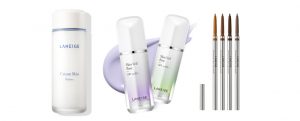Wellness
FDA Study finds Sunscreen Chemicals in Bloodstream
FDA published a randomized clinical study on the effects (or presence) of sunscreen chemicals in the bloodstream in JAMA on...
By: Beauty Insider Journalist / May 29, 2019

FDA published a randomized clinical study on the effects (or presence) of sunscreen chemicals in the bloodstream in JAMA on 6 May 2019.
The U.S. Food and Drug Administration’s clinical trial conducted on 24 healthy participants with 4 types of sunscreen protectors readily available in the retail market, 2 in spray forms, a lotion and a cream.
The Aim of the study is to determine whether the active ingredients of the sunscreens are absorbed into the bloodstream.
The active ingredients tested are all chemical absorbers, namely:
- Avobenzone
- Oxybenzone
- Octocrylene
- Ecamsule
The 4 sunscreens were assigned to the 24 participants, 6 participants for each of the 4 sunscreens. They were applied to the participants in measured doses 4 times a day for 4 days and taking 30 blood samples over 7 days.
The result shows that those who used the sunscreen with the active ingredient Avobenzone registered the highest level of its chemical presence in their bloodstream, followed by Oxybenzone, Octocrylene and Ecamsule.
Contents
In Conclusion
In conclusion, the study stated that the results “do not indicate that individuals should refrain from the use of sunscreen”. It does, however, warrant the need for “further studies to determine the clinical significance of these findings.”
As mention, this study conducted only on chemical absorbers. Physical blockers with their larger particles which sit on the skin to deflect sun rays may provide as an alternative. The physical sunscreens contain titanium dioxide or zinc oxide. Other sun protection includes speciality clothing and UV umbrellas.
Related Articles
To read our article: Physical Sunscreen Vs Chemical Sunscreen, click here.
To read: Effect of Sunscreen Application Under Maximal Use Conditions on Plasma Concentration of Sunscreen Active Ingredients A Randomized Clinical Trial by Murali K. Matta, PhD1; Robbert Zusterzeel, MD, PhD, MPH1; Nageswara R. Pilli, PhD1; et al, JAMA. Published online May 6, 2019, click here.

















